Germán Rosati
The Undesirable Dependence on Frequency of Gender Bias Metrics Based on Word Embeddings
Jan 02, 2023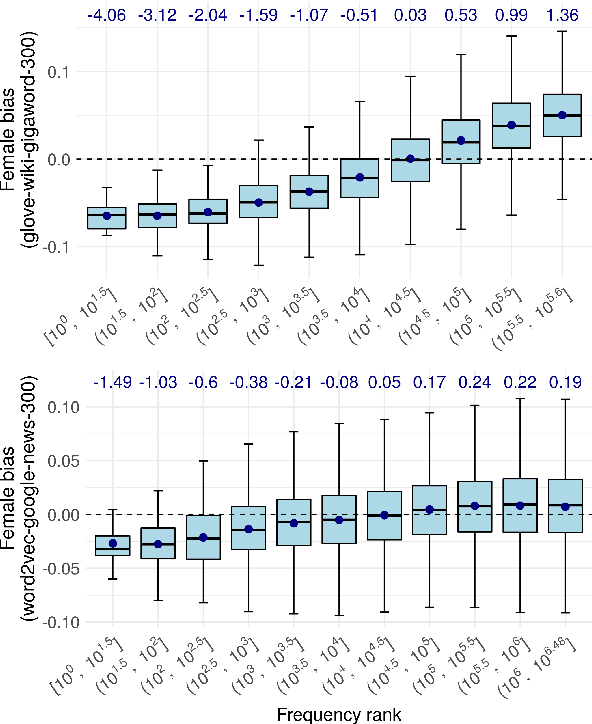
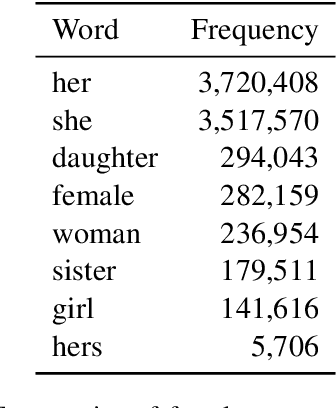
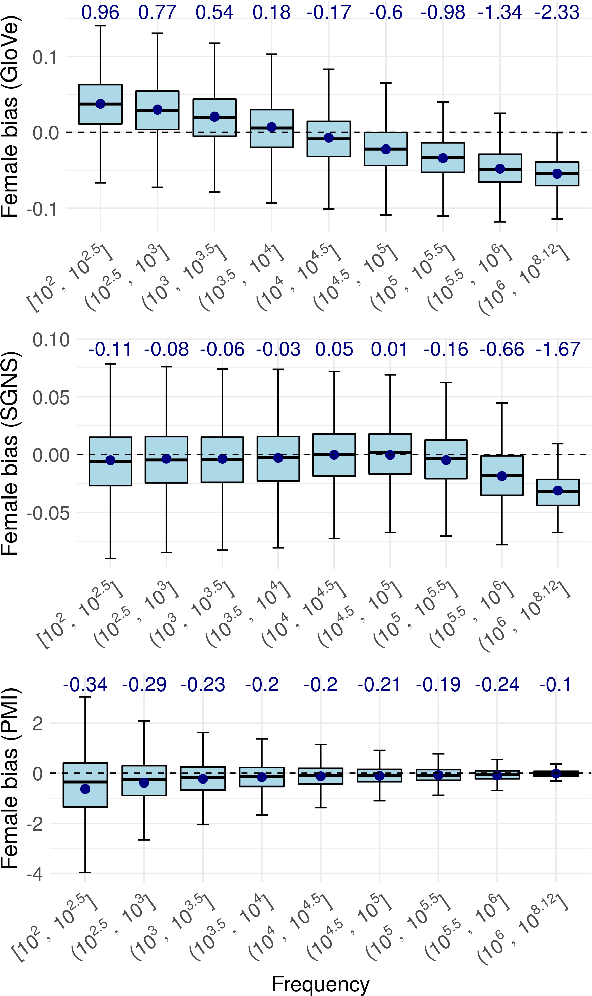

Abstract:Numerous works use word embedding-based metrics to quantify societal biases and stereotypes in texts. Recent studies have found that word embeddings can capture semantic similarity but may be affected by word frequency. In this work we study the effect of frequency when measuring female vs. male gender bias with word embedding-based bias quantification methods. We find that Skip-gram with negative sampling and GloVe tend to detect male bias in high frequency words, while GloVe tends to return female bias in low frequency words. We show these behaviors still exist when words are randomly shuffled. This proves that the frequency-based effect observed in unshuffled corpora stems from properties of the metric rather than from word associations. The effect is spurious and problematic since bias metrics should depend exclusively on word co-occurrences and not individual word frequencies. Finally, we compare these results with the ones obtained with an alternative metric based on Pointwise Mutual Information. We find that this metric does not show a clear dependence on frequency, even though it is slightly skewed towards male bias across all frequencies.
On the interpretation and significance of bias metrics in texts: a PMI-based approach
Apr 13, 2021
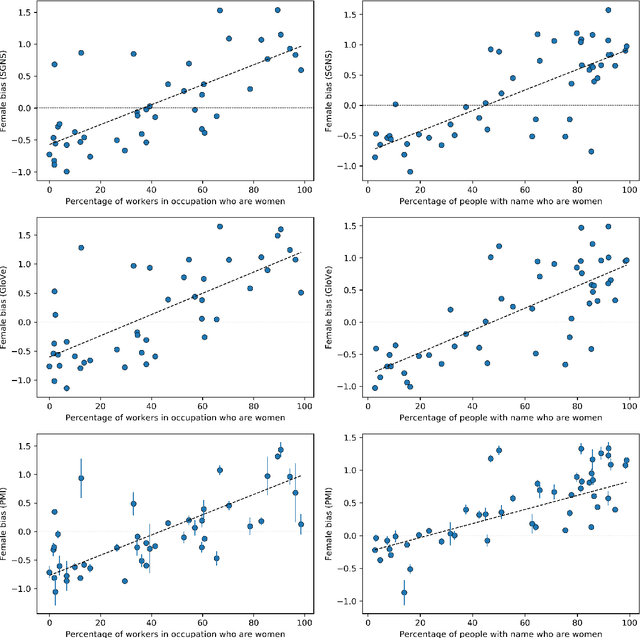

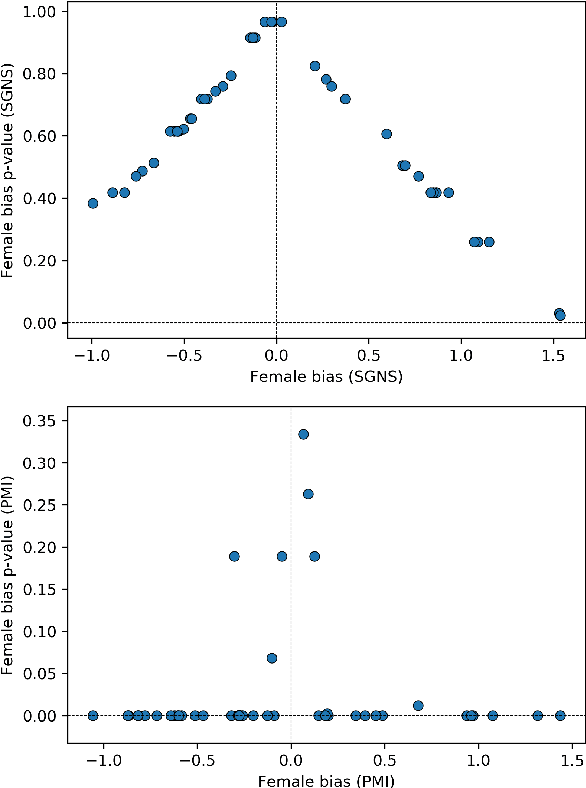
Abstract:In recent years, the use of word embeddings has become popular to measure the presence of biases in texts. Despite the fact that these measures have been shown to be effective in detecting a wide variety of biases, metrics based on word embeddings lack transparency, explainability and interpretability. In this study, we propose a PMI-based metric to quantify biases in texts. We show that this metric can be approximated by an odds ratio, which allows estimating the confidence interval and statistical significance of textual bias. We also show that this PMI-based measure can be expressed as a function of conditional probabilities, providing a simple interpretation in terms of word co-occurrences. Our approach produces a performance comparable to GloVe-based and Skip-gram-based metrics in experiments of gender-occupation and gender-name associations. We discuss the advantages and disadvantages of using methods based on first-order vs second-order co-occurrences, from the point of view of the interpretability of the metric and the sparseness of the data.
 Add to Chrome
Add to Chrome Add to Firefox
Add to Firefox Add to Edge
Add to Edge